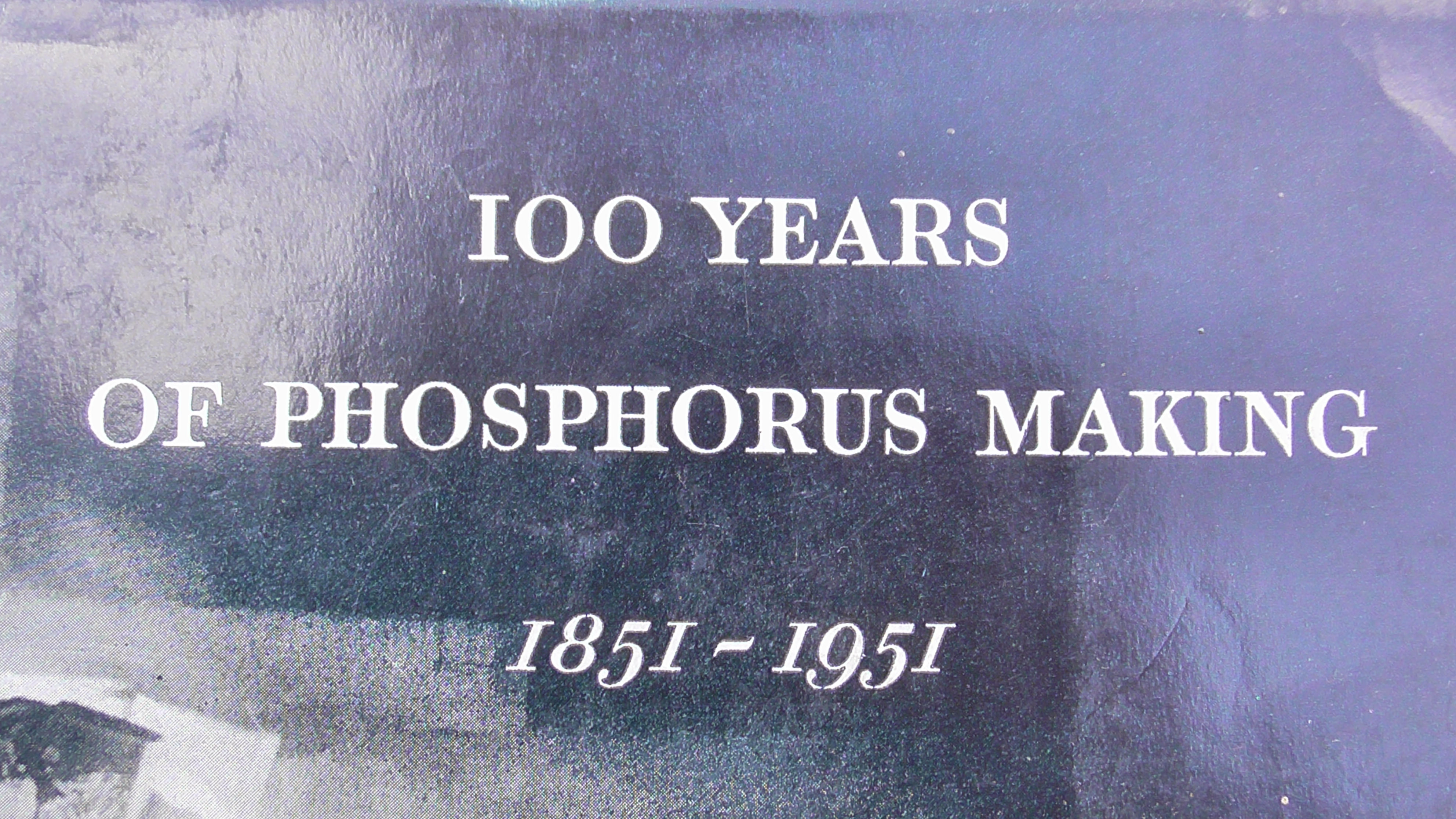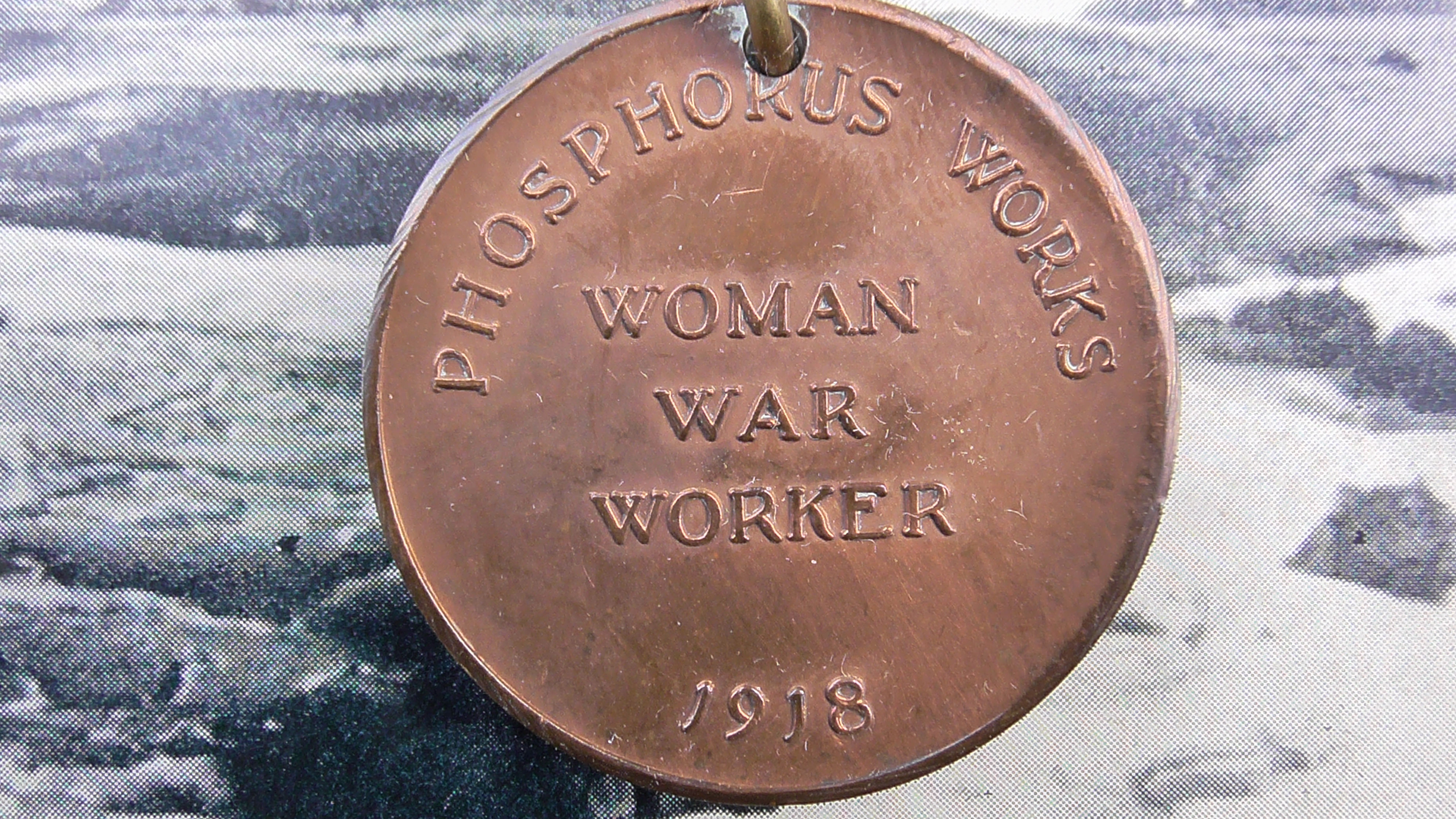“The only good thing that comes from war is the stimulation of scientific research, primarily with the object of killing human beings but incidentally in finding substitutes for age-old materials and methods.”
These are the opening words from chapter 11 of “100 years of phosphorus making”, the sympathetic PR tool released at the turn of the second half of the Twentieth Century by Albright and Wilson Limited. By then this British company had profited handsomely from both wars, despite the so called objections from the Quaker roots of the two founders.
Though Arthur Albright had been wary of using his enterprise for warlike purposes (or so we are supposed to believe in this well recited tale), his descendants and that of Wilson were not so pious.
1915 saw the direct manufacture of white phosphorus for killing people. Its use then was spun as “smokescreen”, (little has changed in 100 years there then), though the effects on the human body would have been fresh in memory involving match making and phossy jaw. Phosphorus pentoxide is of course an irritant and harmful, despite military protestations to the contrary. The battle of Loos saw the first artillery use of p4 and it would also be used by Albright and Wilson’s favourite service collaborator, the Royal Navy. Molten phosphorus falling on troops of either side seems to be forgotten in the account of the company history.
Threlfall reveals
“The 1914 output of two and a quarter million pounds rose in 1915 to three and a quarter, in 1916 to almost four, in 1917 to five and in 1918 to six million pounds.”
This production saw the creation of a sub factory at Heath Town in Wolverhampton which started production in 1917 and reportedly closed in 1920. We learn that at this site there was also a tip- though one has to wonder where that now lies and what it contains? Canal boats were also used between Wolverhampton and Oldbury carrying the toxic cargo. One also has to wonder just how far the AW legacy of pollution extended along the Birmingham canal under the direction of the British Governments war departments?
Other dangerous chemicals of death were also manufactured including mustard gas and phosgene. As well as this lachrymators, such as Sulphuryl chloride were also being produced but under the guise of what purpose? This chemical is used as a source of chlorine, which was of course used with devastating effects during World War one. With contact with water it releases hydrochloric and sulphuric acids.
We have looked at a canalside tip used by Albright and Wilson during their wartime production HERE.
WORKERS.
“One great change wrought by the war was the employment of women and girls in the works, at first without enthusiasm on the part of the management but by degrees with admiration for the variety of jobs they undertook. Most of them gave up the work at the end of the war, when Mrs Bate, the supervisor, and her welfare workers were present at a farewell concert given by the girls themselves at the Institute Hall in Langley. They and the company’s other workers received a war medal struck by A. & W.”
A figure averaging 900 workers were employed in the war years at Albright and Wilson which dropped to below 600 after 1920.
The company history volume is almost entirely satisfied with telling the story of those who made the money out of “100 years of phosphorus making” and not those who made it for them at Oldbury. There appear to be very few anecdotal accounts of what these workers were exposed to or health effects suffered as a consequence of war and dabbling with dangerous chemicals. Just as with match making, women would be likely to be less outspoken concerning such matters.
As for the medal spoken of by Threlfall, a small old penny size piece of brass, we have obtained one. For some reason its ribbon is the tricolour, ironic that it was a certain French company which took over and sank the Albright/Wilson ship for good at the start of the Twenty First Century.
But it is typical that the name of whoever received this object is omitted and all they received was a token coin bearing the name of the company and its logo on the reverse.
So nearly 100 years after these medals were issued, what price are they worth today for those who risked their health to manufacture dangerous chemicals for the pointless vanity war that cost so many lives? If you have one of these in your dusty drawers you might want to call Bargain Hunt or take them to The Antiques Roadshow.
£80, SOLD to the highest bidder, who will keep this medal with the other artefacts and use them to expose this company for what they really were which is parasites, profiting off the backs of ill informed chemically exposed workers.




